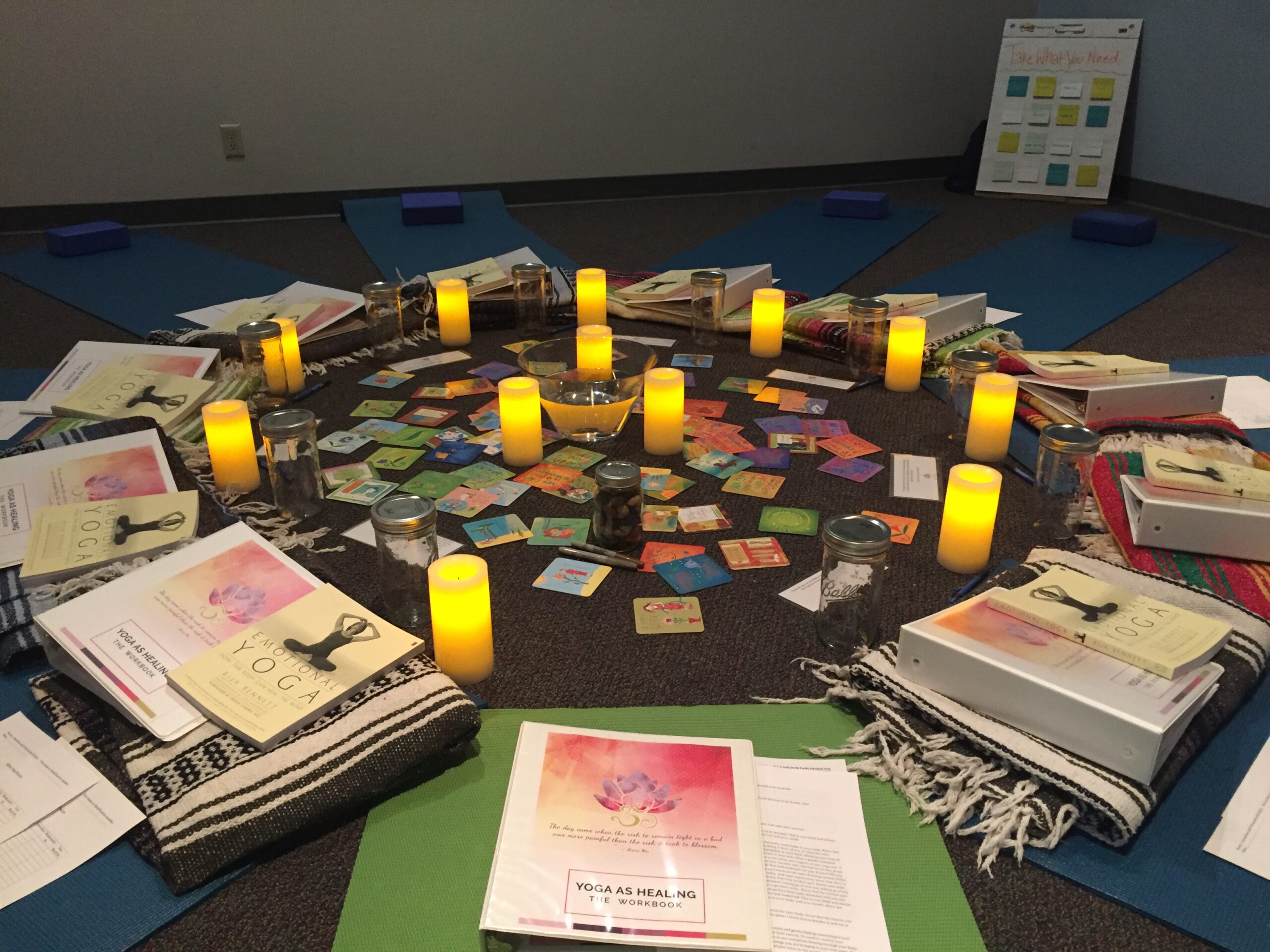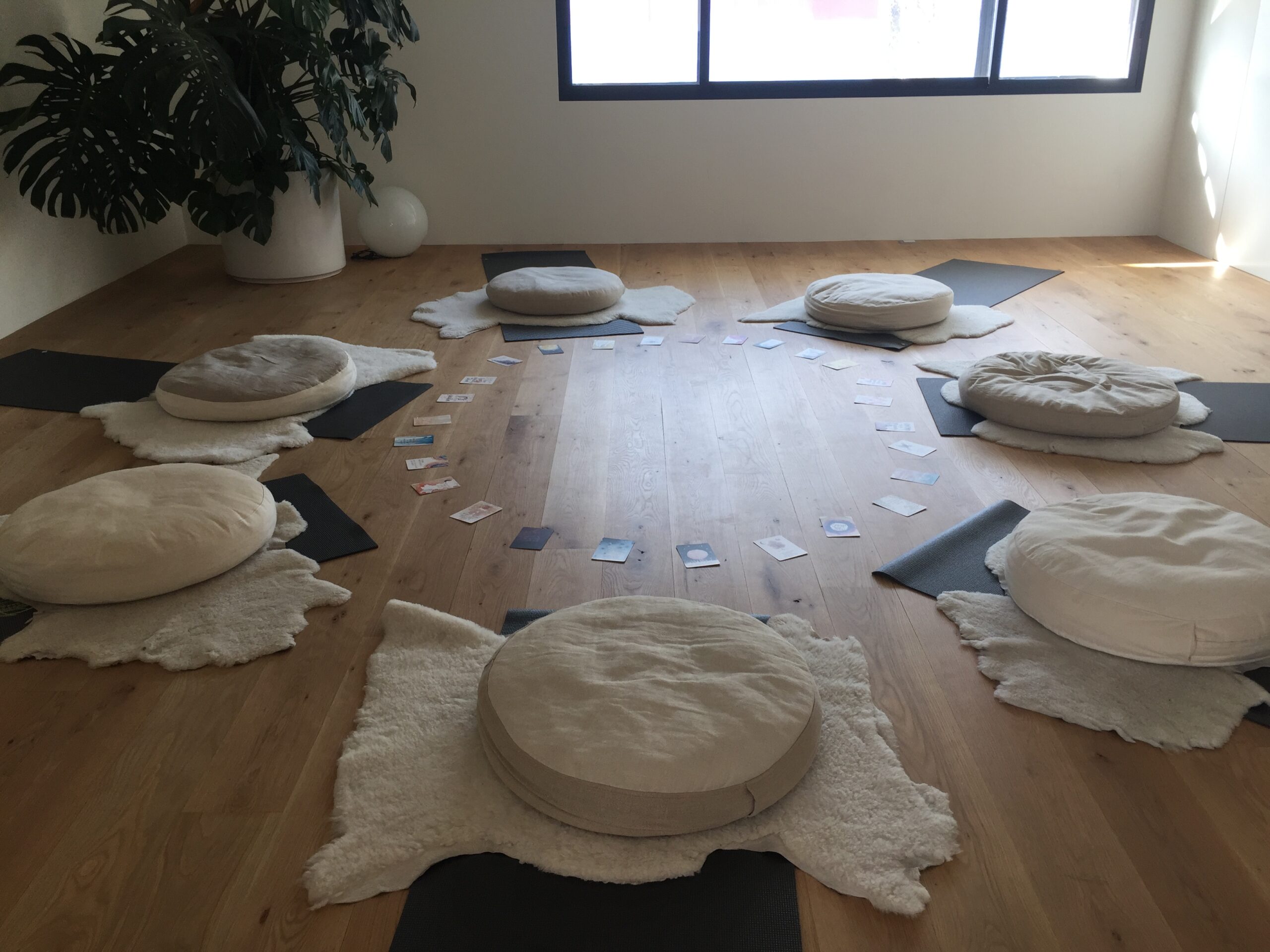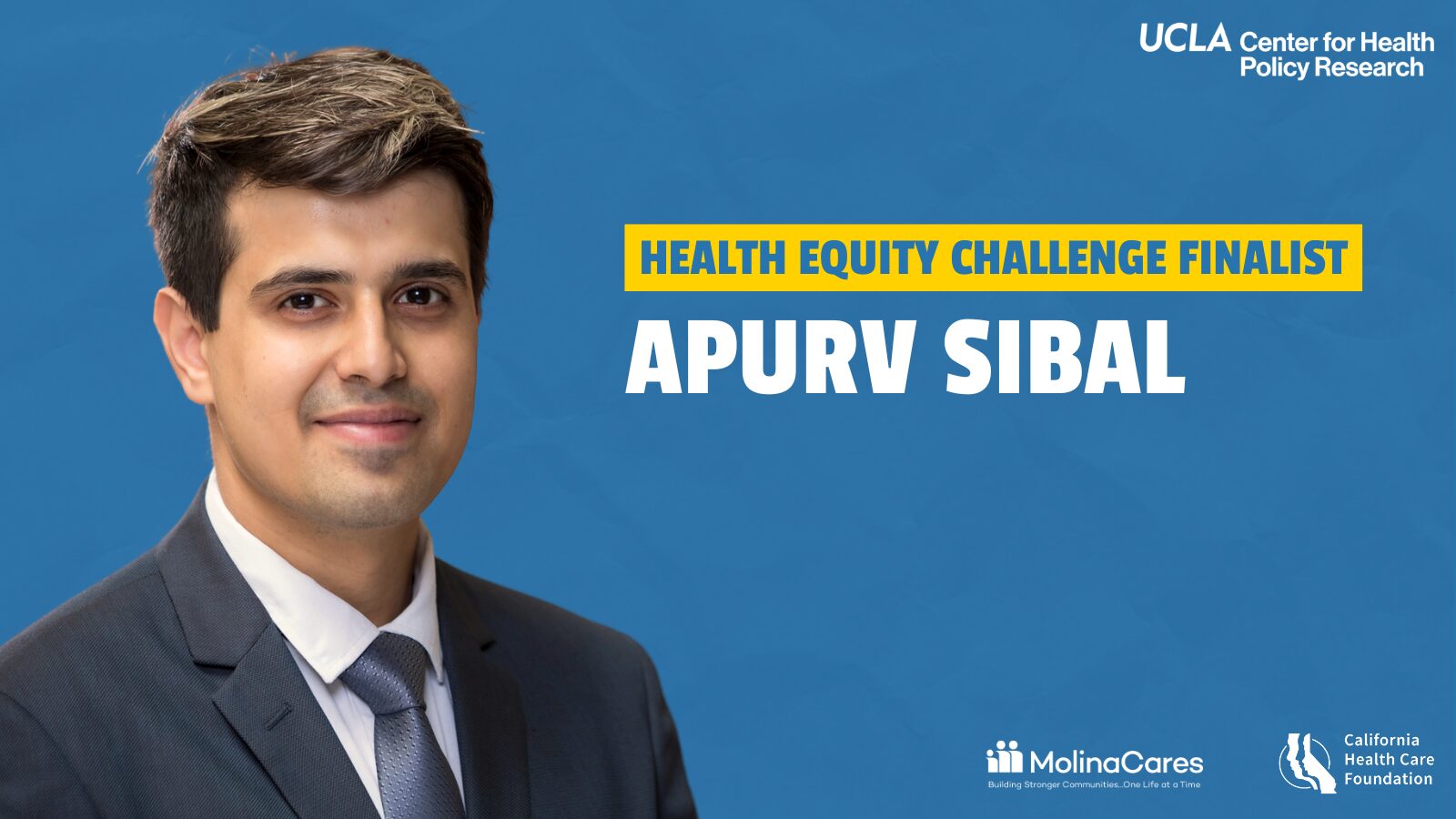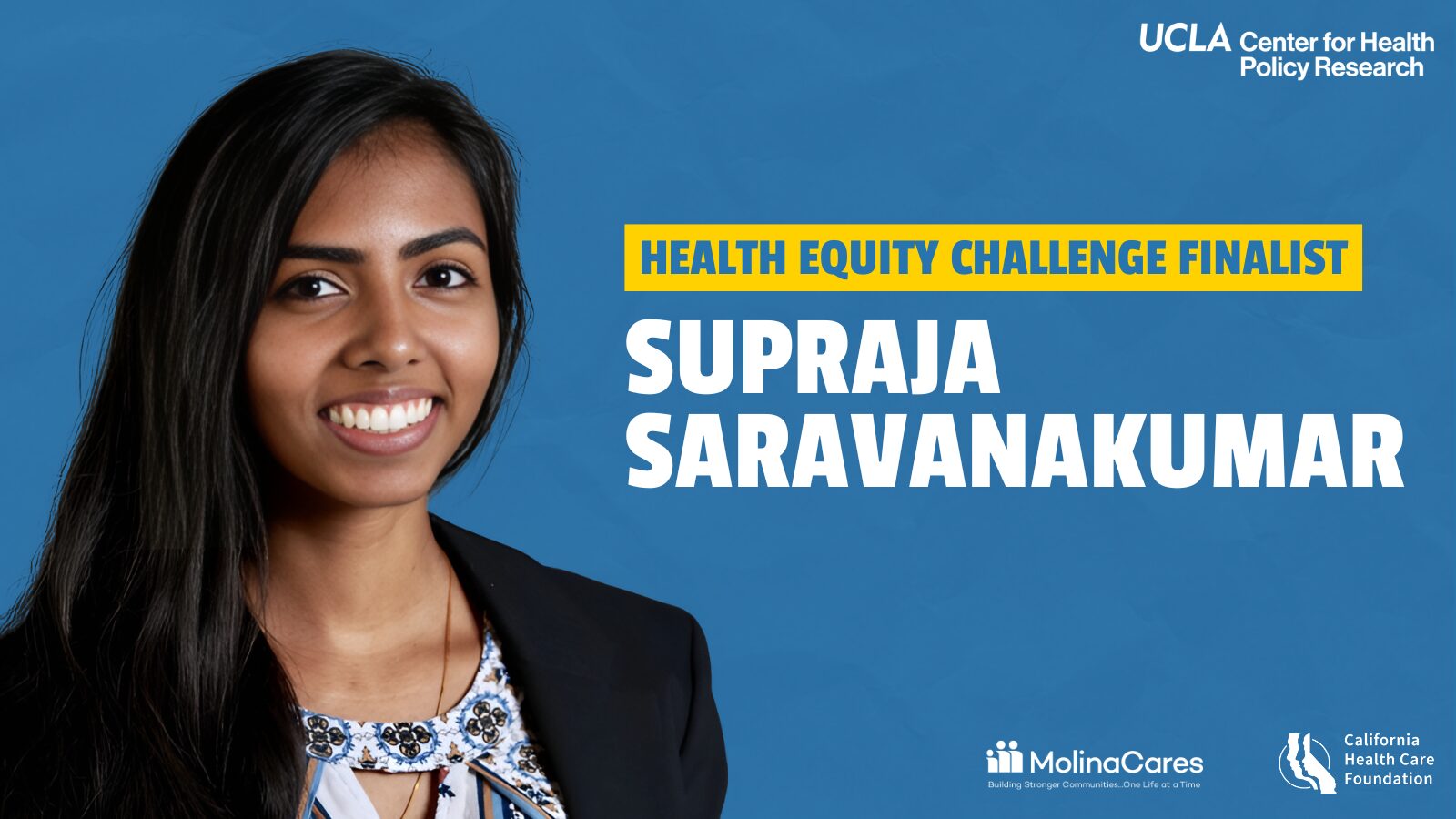
Imagine entering a yoga class. Can you picture what this might look and feel like? Maybe you’re an experienced yogi or maybe you’ve never taken a yoga class before. Either way, take a moment to visualize what you might see as you enter this yoga class.
Whatever you pictured, allow that image to slowly fade. Now, I invite you to visualize the following yoga class: As you enter the yoga space, you notice the faint hum of an essential oil diffuser and hear India.Arie playing in the background. Colorful yoga mats are laid out in a circle, rather than in rows. At the center of the circle are small cards depicting affirmations and diverse bodies. There are softly lit candles and blankets neatly folded just above each mat. You grab a seat on a mat as the instructor greets you and smiles in your direction. The class begins and as you look around the room, you notice that every person is doing something different. The instructor uses phrases like, “I invite,” “as you would like,” and “listen to your body in this moment.”
This is the environment of a healing yoga class that I aim to create as a trauma-informed yoga instructor. Hopefully, you initially pictured a similar soothing environment. However, given the way yoga has been appropriated and often reduced to a form of exercise in the western world, you may have imagined something completely different. Despite the reduction of yoga to a physical practice, which is actually only one component of yoga known as asana, yoga is a rich philosophy that promotes connection. As a South Asian Buddhist woman, yoga allows for me to renew connections to my body, breath, mind, spirit, and to others.
As such, yoga has immense power to promote healing, especially for survivors of sexual and relationship violence. College student survivors that I have worked with, whether as study participants or “Yoga as Healing” attendees, have shared the multiple ways yoga allows them to heal. For instance, Xochilt, a participant in my dissertation research with women of color college student survivors of dating violence, shared how yoga supported her healing journey. She said that yoga “just kind of ignites in your body and just releases like this good feeling in you.” Xochilt went on to share, “[yoga] clears my mind. It just relaxes me. I feel that I set my intentions and then I have a good day.” In research studies, yoga has also been found to reduce the effects of trauma on mental health symptoms like post-traumatic stress and depression.
“Yoga has immense power to promote healing, especially for survivors of sexual and relationship violence. College student survivors that I have worked with, whether as study participants or ‘Yoga as Healing’ attendees, have shared the multiple ways yoga allows them to heal.“
I have led numerous healing yoga programs on college campuses and for community organizations in person and via Zoom. I often title these yoga sessions, “Yoga as Healing,” as they are designed to promote healing among those participating. The curriculum of “Yoga as Healing” was created by a talented healer named Zabie Yamasaki. In her book, Zabie wrote: “Yoga can be a pathway for the integration of mind, body, and spirit amid all of the disintegration that trauma causes” (page xxii).
As an educational scholar who conducts qualitative research using interviews, I also use trauma-informed yoga practices in my research. In my research, I center participants’ needs for healing over my own research goals, aiming to cultivate an environment that opens up possibilities for healing through the use of meditation and invitational language, and by engaging in vulnerability. Using healing research methods rooted in yoga philosophy is especially powerful with communities of color and other individuals who experience oppression in society who have so often been harmed by researchers.


In the Los Angeles area, there are so many yoga studios dedicated to promoting healing for all, whether or not they have experienced trauma. The Tree Yoga Cooperative and People’s Yoga are two such spaces that center communities of color and all aspects of yoga philosophy in their teaching. There are also many studios that offer healing yoga classes online, such as Black to Yoga and HealHaus. Porchlight Wellness and The Breathe Network are two resources that survivors of sexual and relationship violence can turn to for trauma-informed yoga services. I encourage you to check out these and other yoga spaces in your local community and experience the ways that yoga may support your healing.

By Nadeeka Karunaratne
2023 Health Equity Challenge Finalist
Nadeeka Karunaratne is a PhD candidate in the Higher Education and Organizational Change program at UCLA. She conducts research on issues of campus sexual and relationship violence, exploring the experiences of minoritized survivors with a focus on healing. She is a trauma-informed yoga instructor and leads healing yoga programs on college campuses and in the community.
continue reading
Related Posts
As many as 50% of blind high school students drop out of high school and COVID only exacerbated this problem.
Coming from a low-income community of color, I personally witnessed how generations of systemic racism and economic corruption have led to a powerful mistrust in the health care system.
Postpartum depression (PPD) is a silent struggle for many new mothers, but for South Asian women, cultural stigmas and generational pressures often exacerbate this already challenging condition. As a woman of color and a first-generation college graduate, I have walked a path shaped by the nuances of both my cultural heritage and my academic pursuits.



